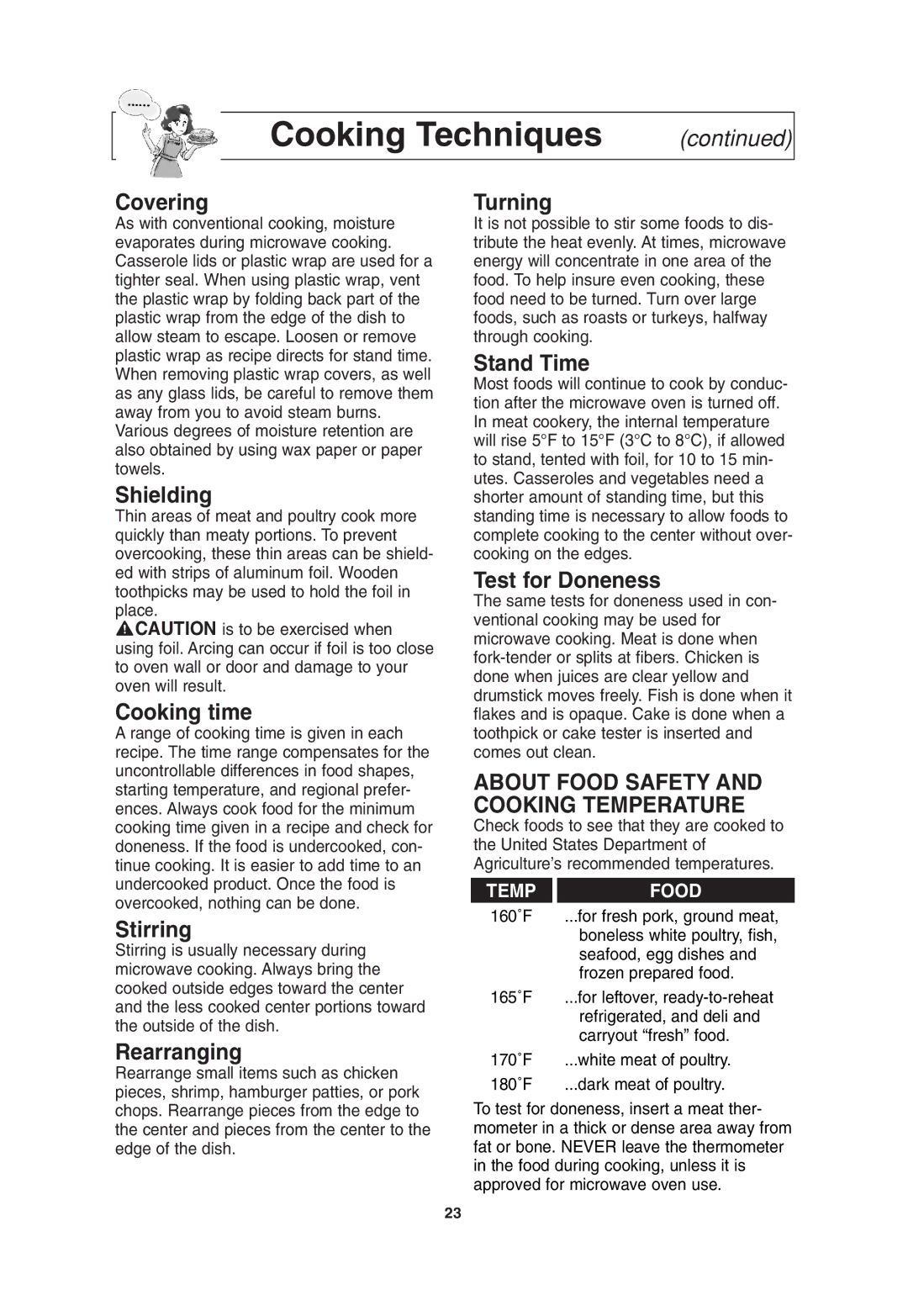NN-T675, NN-T685 specifications
The Panasonic NN-T675 and NN-T685 are two outstanding microwave models that showcase the brand's commitment to innovative designs and advanced cooking technologies. Both models cater to modern cooking needs, blending functionality with user-friendly features.One of the key highlights of the NN-T675 and NN-T685 is their inverter technology. This groundbreaking feature allows for consistent and even heating by providing a steady stream of microwave energy. Unlike traditional microwaves that use a pulsing method to achieve lower power levels, inverter technology ensures that food heats uniformly, reducing the risk of cold spots. This is particularly beneficial when preparing delicate dishes such as sauces or melting chocolate.
In terms of capacity, both models offer ample space that appeals to families and those who often cook in larger quantities. The NN-T675 boasts a 1.2 cubic feet capacity, while the NN-T685 offers a slightly larger space, making it ideal for accommodating larger dishes. This added capacity allows users to cook multiple items at once without compromising on results.
The control panel of the NN-T675 and NN-T685 is designed with user convenience in mind. Featuring an easy-to-read and navigate layout, users can easily access various cooking functions. The one-touch sensor cooking feature is particularly noteworthy, as it automatically adjusts cooking times and power levels based on the specific food being prepared. This eliminates guesswork, making meal preparation more straightforward and efficient.
Both models also offer a variety of pre-programmed cooking settings, allowing users to select options for reheating, defrosting, and cooking a wide range of foods, from popcorn to complex entrees. This versatility makes them suitable for various culinary tasks and enhances their appeal to diverse cooking preferences.
Additionally, the sleek design of the NN-T675 and NN-T685 fits seamlessly into any kitchen décor. Their contemporary aesthetic and compact build make them easy to integrate into existing kitchen spaces, while their high-quality materials ensure durability and ease of cleaning.
In conclusion, the Panasonic NN-T675 and NN-T685 microwave models stand out for their inverter technology, generous capacity, user-friendly controls, and sleek designs. They represent an excellent choice for anyone looking to upgrade their kitchen appliances with models that prioritize performance and convenience. With these features and characteristics, Panasonic continues to deliver reliable and modern cooking solutions for everyday use.

